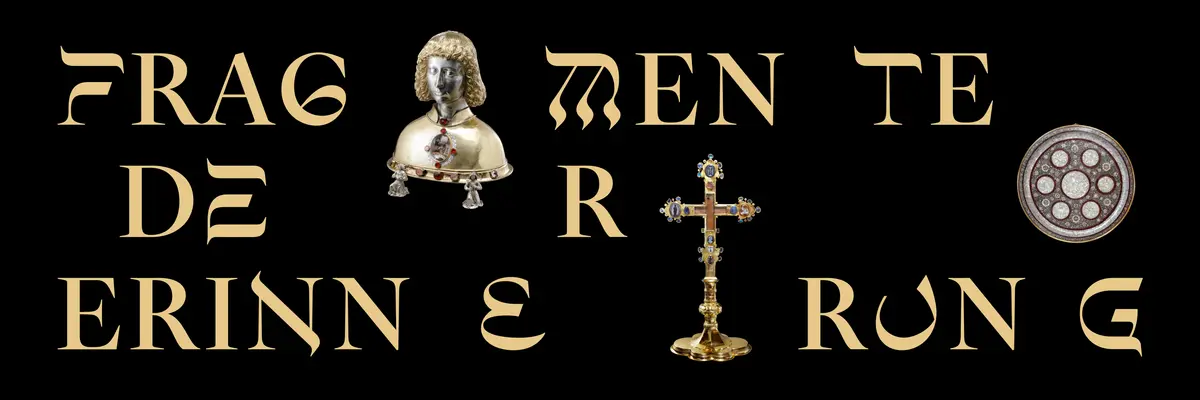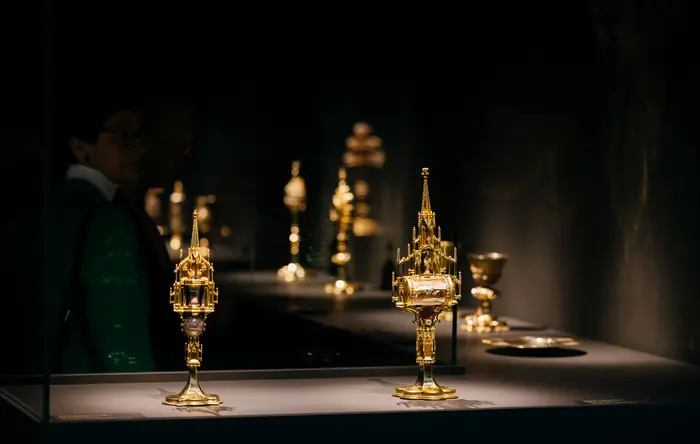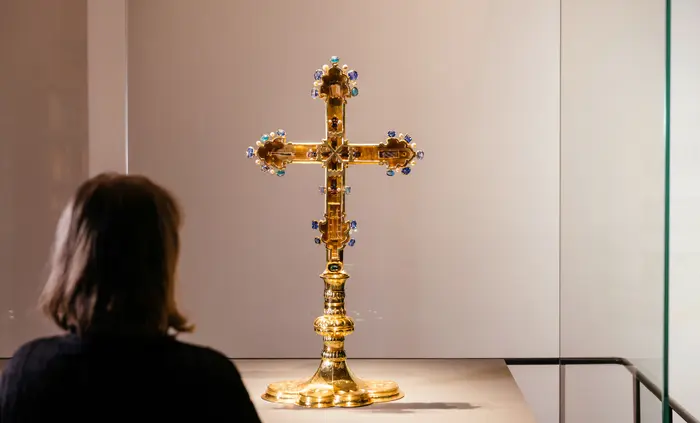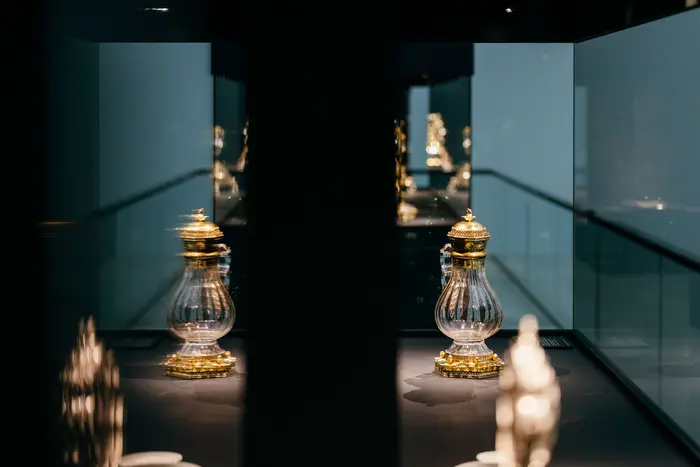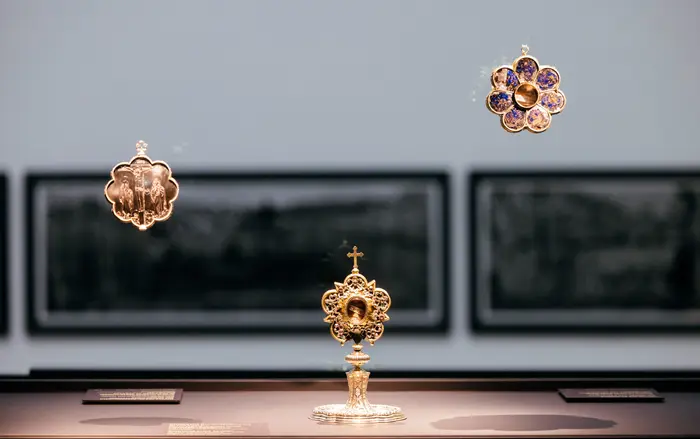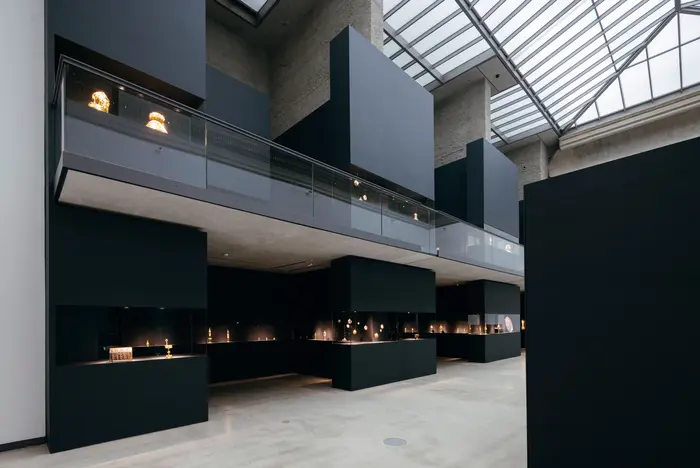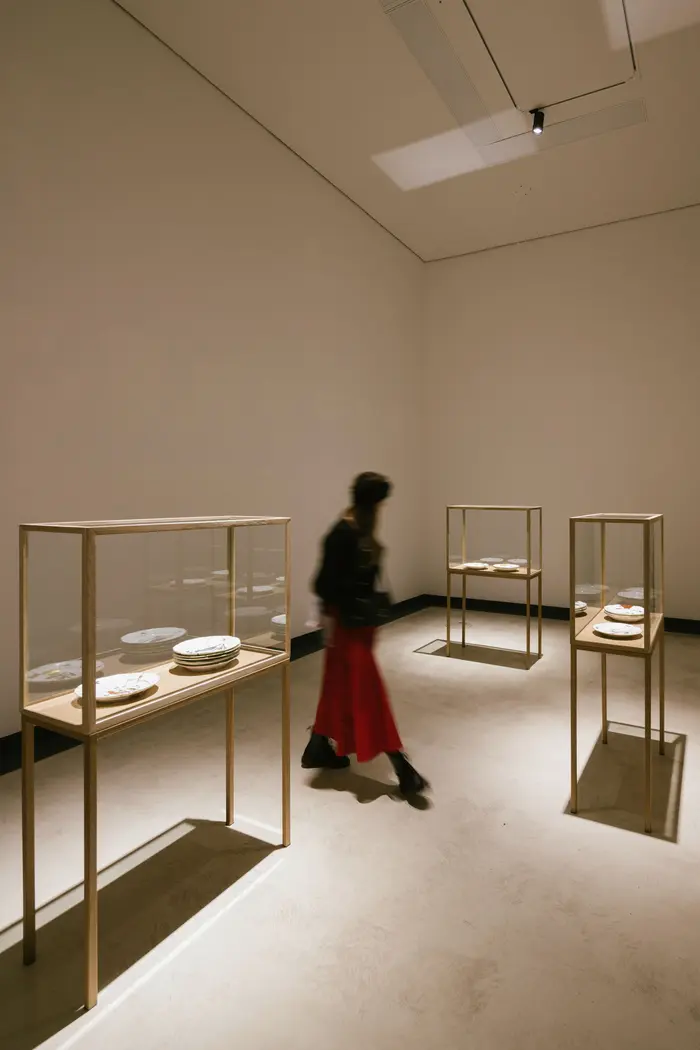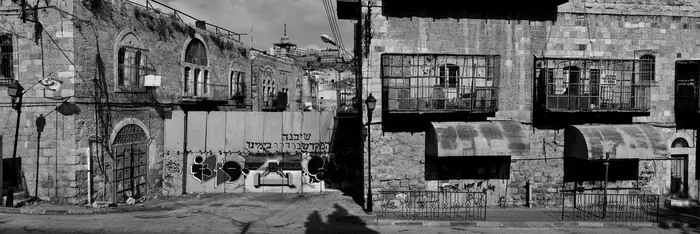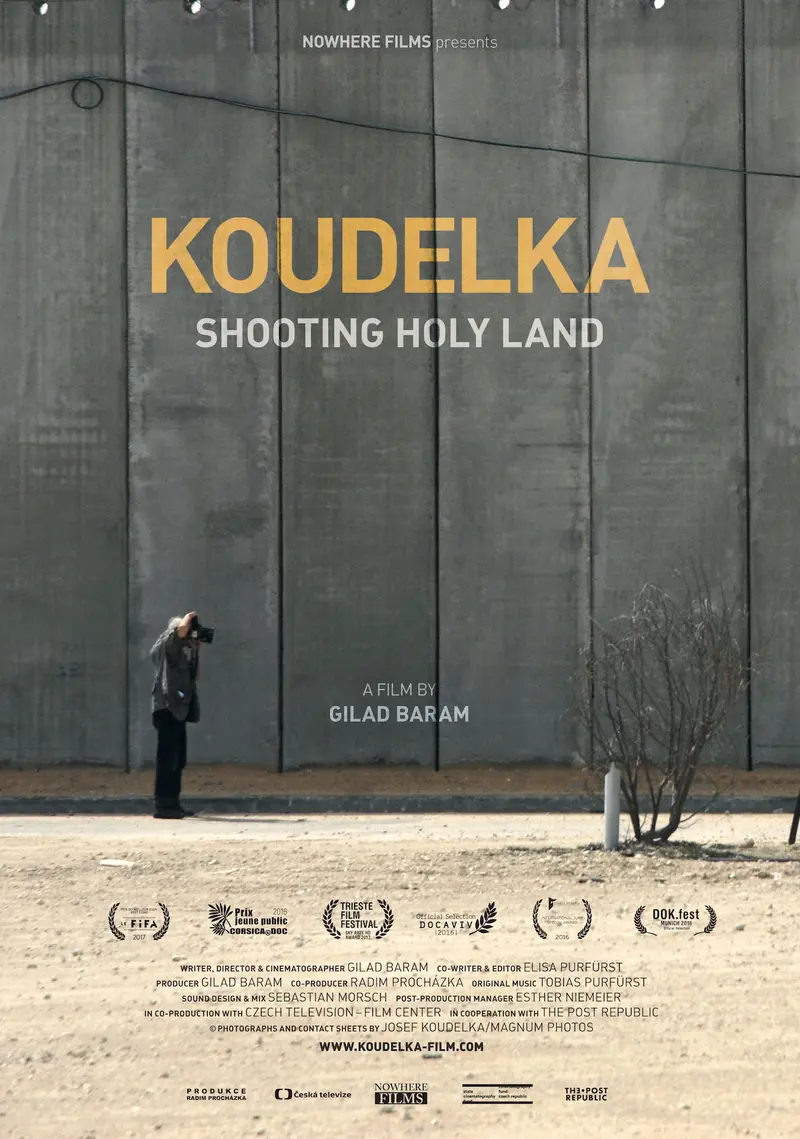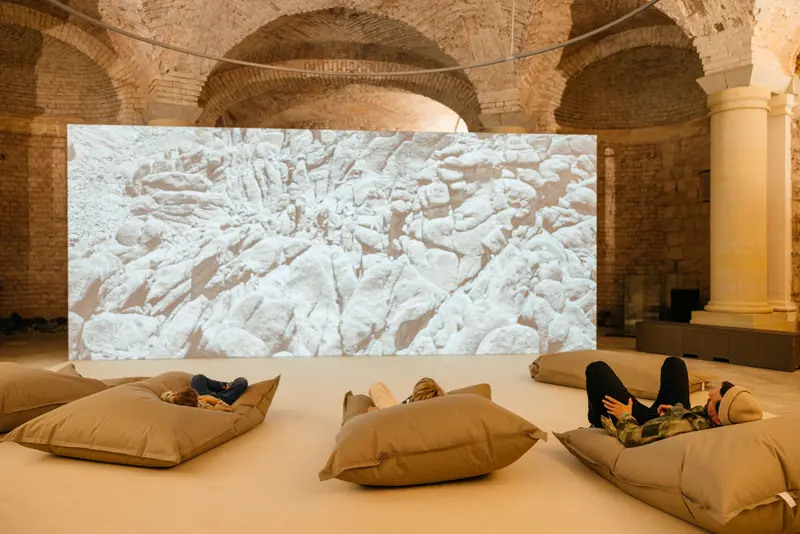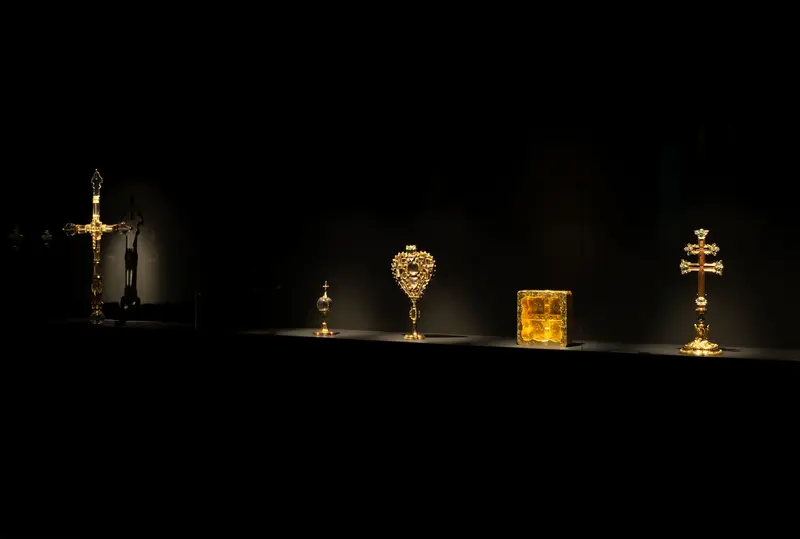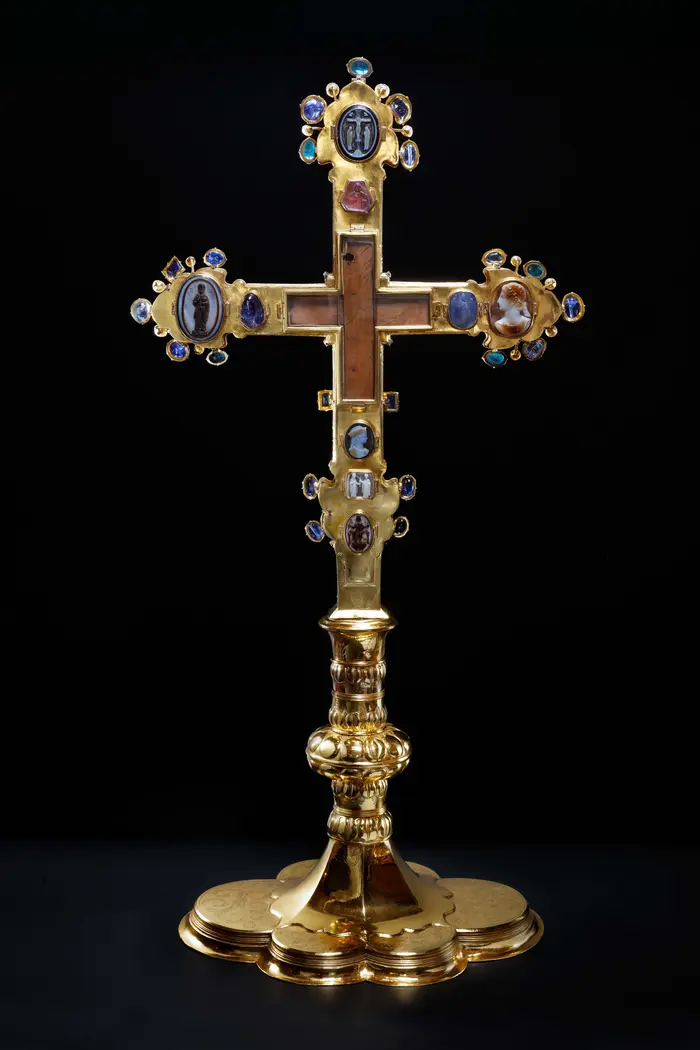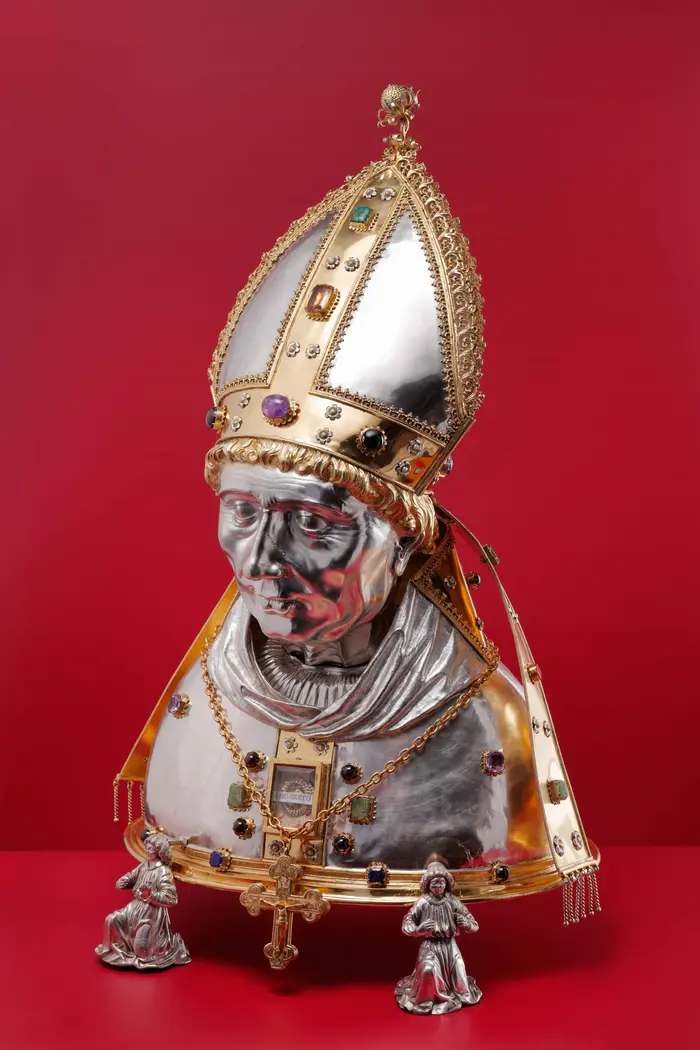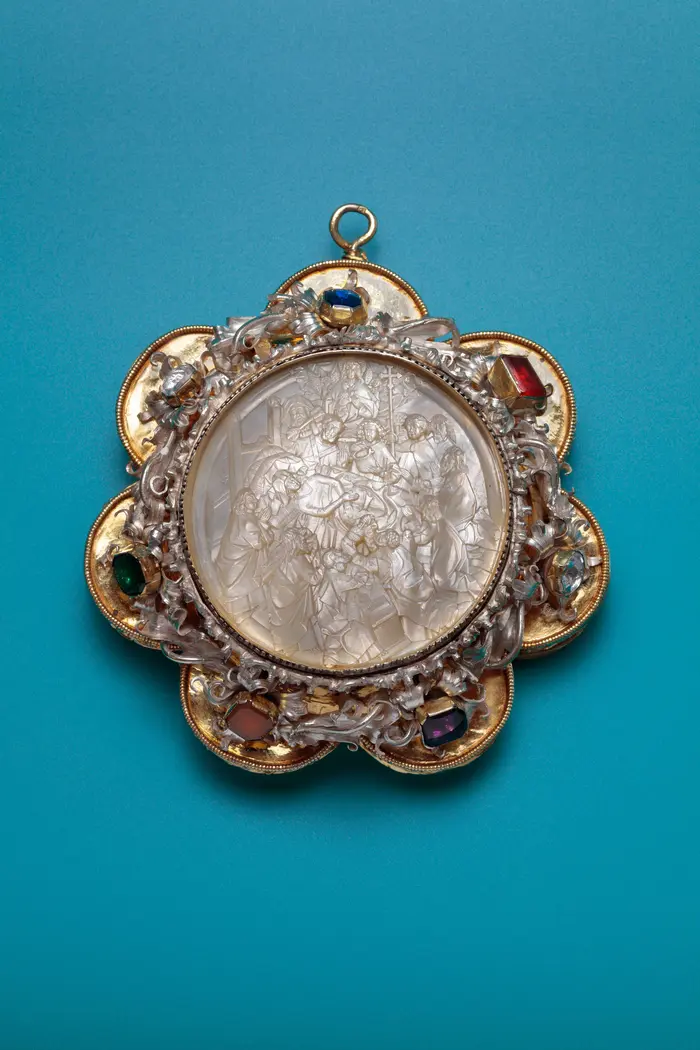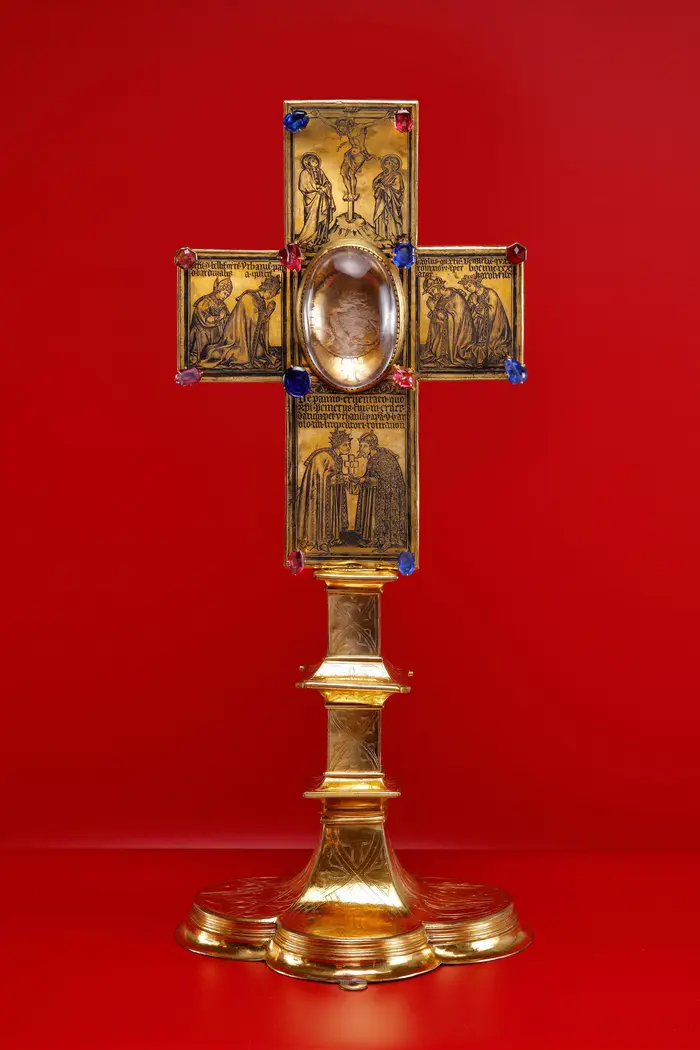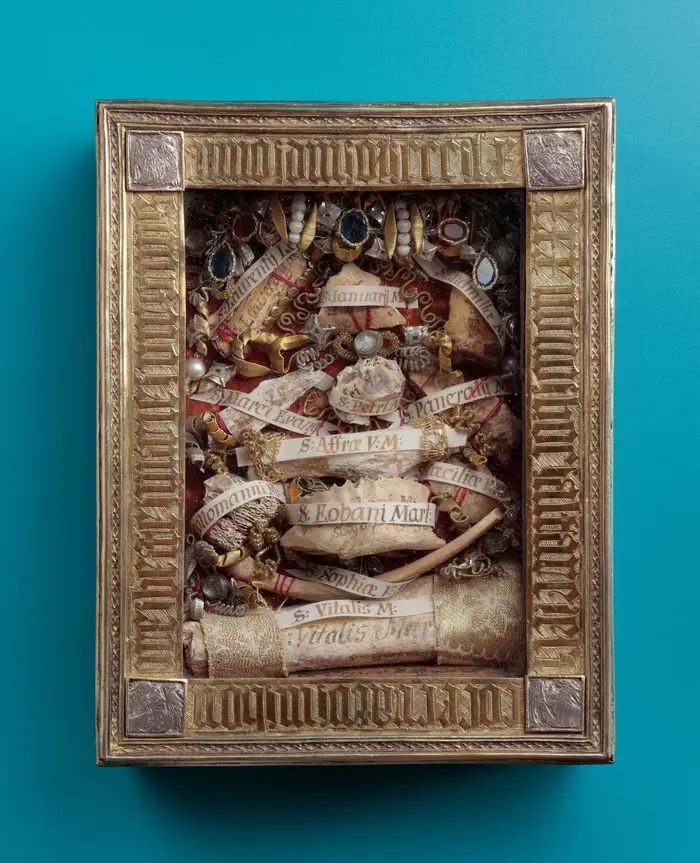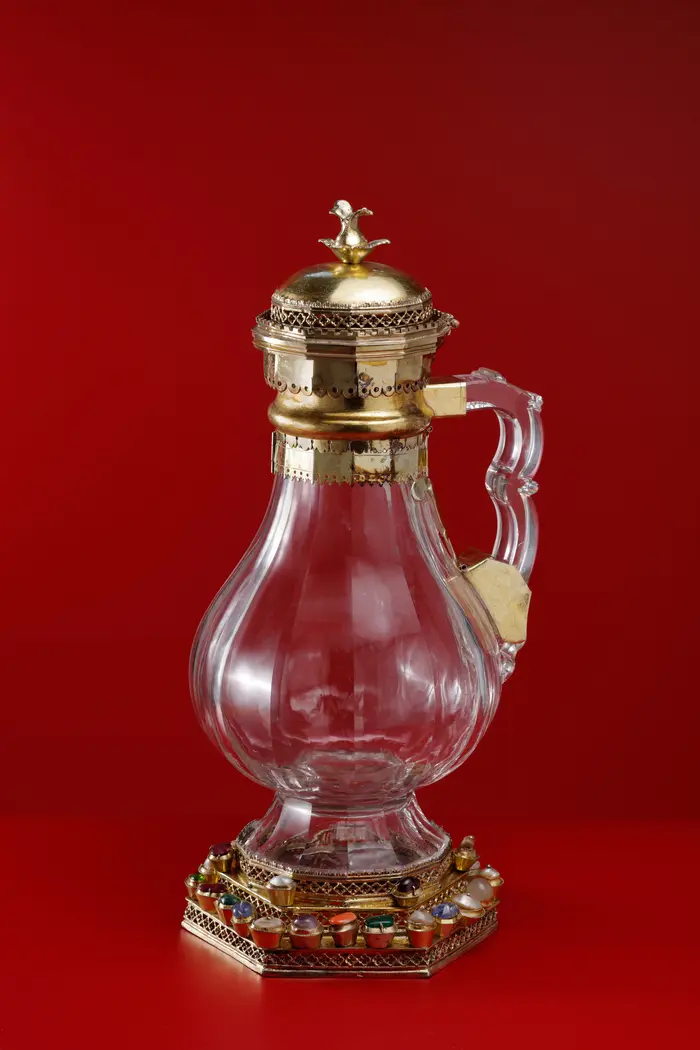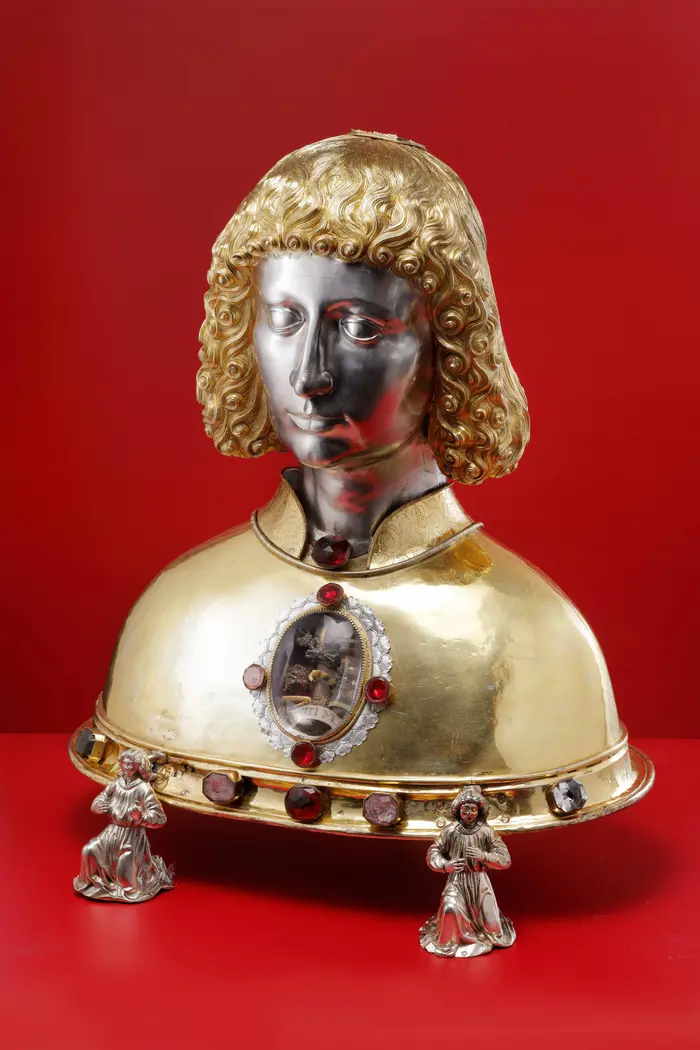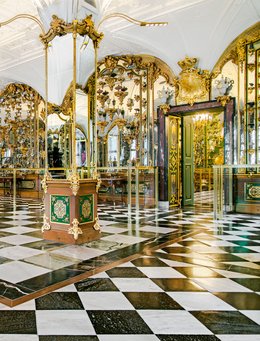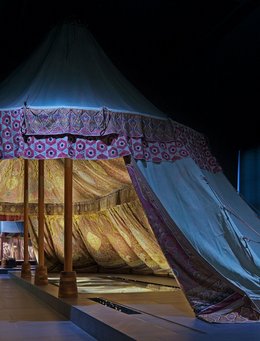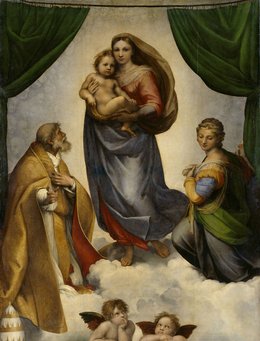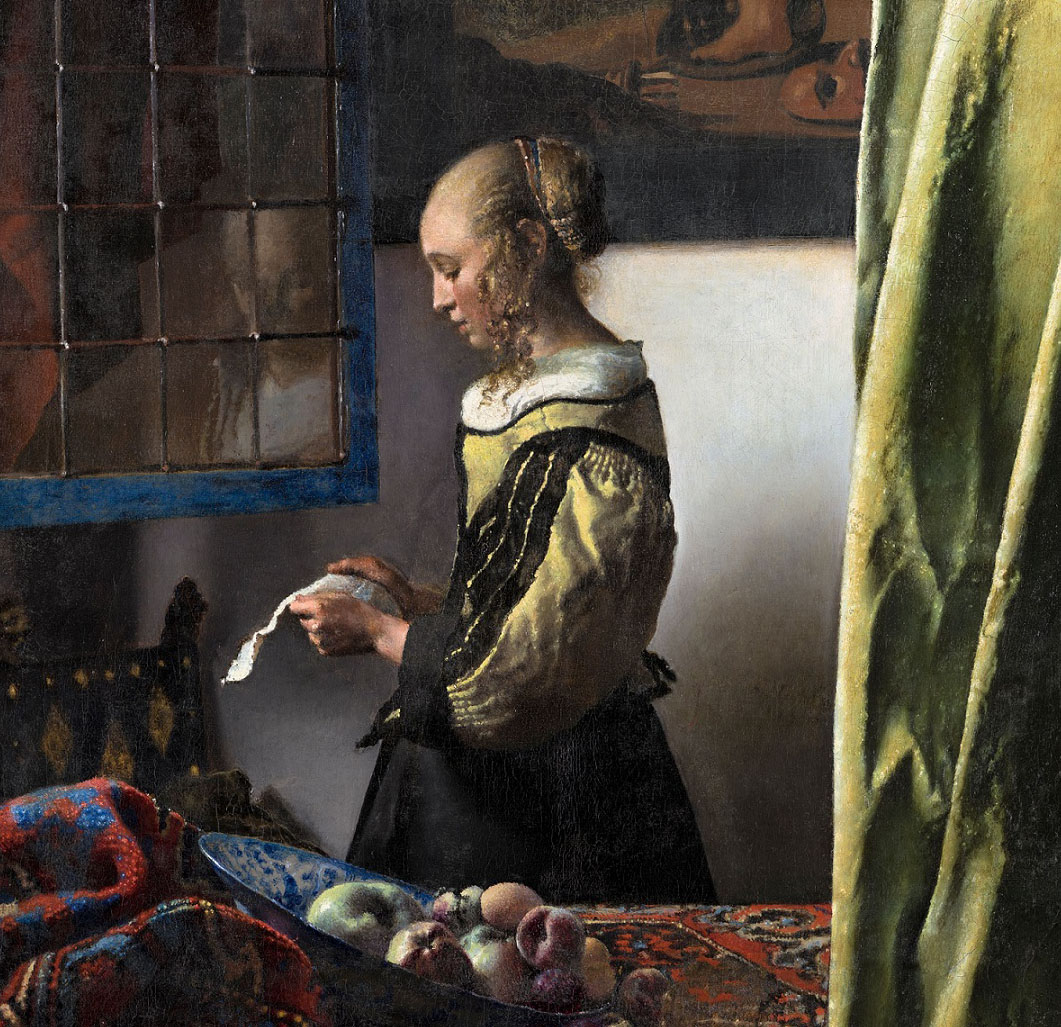Im Zentrum
At the centre of the exhibition is the relic treasure of St Vitus Cathedral in Prague, which has grown over the centuries and is the subject of a dialogue between three contemporary artists. Edmund de Waal's ceramic work creates spaces for meditation and reflection with the finest nuances of colour, form and rhythm. Josef Koudelka's photographs document the wall that Israel has erected against the Palestinian territories of the West Bank. The film "In the Land of Drought" by Julian Rosefeldt evokes memories of the prehistory of human civilisation in regions of drought and questions our relationship to the environment and the historical consciousness of the present day. This ensemble is completed by a library that can be used by visitors as a place where the memory traces of our civilisation are collected and processed - even if they are only fragmentarily preserved.
